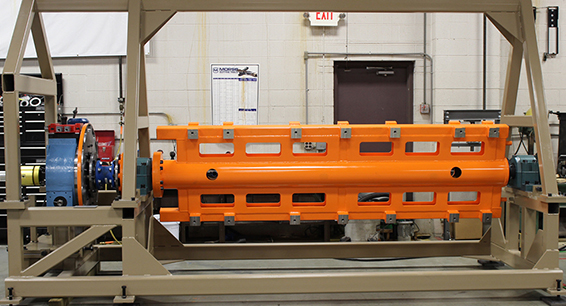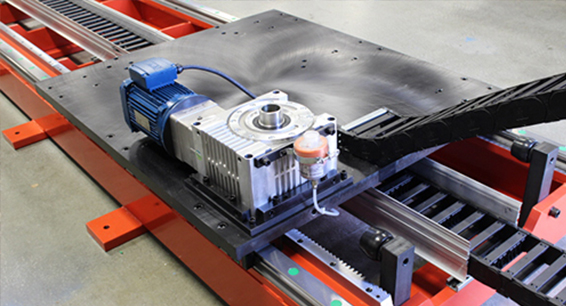The addition of auxiliary axes to your manufacturing process offers several benefits, enhancing overall productivity and operational efficiency. By creating multiple workstations, robots gain increased accessibility to tooling or parts, leading to heightened productivity. Simultaneously, the integration of auxiliary axes helps reduce the floor footprint, optimizing space utilization.
The primary advantage of incorporating a multi-axis positioner into a production process is a significant boost in productivity compared to using robots with a fixed position. This is particularly advantageous for manufacturers dealing with a variety of sizes in automotive parts. The flexibility provided by multi-axis positioners allows a single robot to adapt to different sizes, eliminating the need for individual robots for each size variant.
There are various multi-axis positioner options available, ranging from 2 to 5 axes, providing manufacturers with choices that suit their specific production requirements. These options contribute to a more agile and adaptable manufacturing process, ultimately enhancing overall operational efficiency.
Single Axis Positioners
The rotary table is versatile and can be employed in settings with multiple parts set up. It rotates to make the parts accessible to the robot, streamlining the workflow. Additionally, for large workpieces with challenging-to-reach areas, the table's rotation provides the robot with increased access from different angles. This adaptability makes the rotary table a valuable tool in welding operations for improved efficiency and accessibility.
2- Axis Orbital / Skyhook Positioner
A two-axis robotic weld positioning system offers greater flexibility than a tilt or rotational positioner. Its primary advantage lies in ensuring that the workpiece remains within the robot's range throughout the process. This not only enhances efficiency but also eliminates the necessity for the robot to travel on a track, thereby reducing overall costs.
Drop Center Positioning
Drop Center positioning units share similarities with skyhooks, but the inclusion of a tailstock significantly enhances their load-bearing capabilities, offering greater stability. This option is particularly effective in efficiently managing longer or larger parts with increased efficiency.
3- Axis Positioners
Trunnion:
The trunnion 3-axis positioning system enables the robot to access one side of the tooling or part before rotating to work on the opposite side. This sequential process significantly diminishes the time operators would otherwise spend replacing the part, leading to a notable improvement in the efficiency of the production line. Additionally, it is crafted with a high-precision cam for optimal lifting performance.
Sky Hook
The application involves utilizing a 3-axis Sky Hook positioning robot for continuous operations on various surfaces. This implementation aims to enhance the quality, integrity, and aesthetics of the final product. The Sky Hook's 3-axis positioning system can be crafted with a high-precision cam for the lift and rollover mechanism, or alternatively, with a high-precision acme screw and a low backlash gear head for the rollover function.
3- Axis Ferris Wheel Positioner
The Ferris Wheel positioning system involves moving the part horizontally with the assistance of two headstock/tailstocks. Its notable advantage lies in enabling the robot to work on one side of the part while the other side is being replaced.
4 & 5 Axis Positioner
For customers dealing with intricate parts and heightened productivity demands, the preference often leans towards 4 & 5 axis positioners. LazerArc’s 4 & 5-axis positioning systems are meticulously crafted, utilizing a combination of zero backlash cam systems and low backlash gear heads to achieve impressive levels of accuracy and repeatability.
L Sky Hook
In scenarios where complex geometries require lifting to different heights, a 5 axis Sky Hook proves to be a valuable choice for the robot. LazerArc’s 5-Axis L Sky Hook positioning system is purpose-built to handle multiple part positioning and processing applications.
LazerArc uses a combination of zero backlash cam systems with low backlash gear heads to achieve high accuracy and repeatability on all systems. LazerArc positioning systems are not catalogued items but customer specified assemblies designed to fit your application are capable of fitting into your automated robotic systems and units can be adapted to your specific servo motor or robot brand in order to expand manufacturing capabilities. Every application for positioning systems is different and each customer should be treated with any specific differences in mind.
Lazerarc also provides custom Robot Linear Transfer Units. To read our guide, click here.






